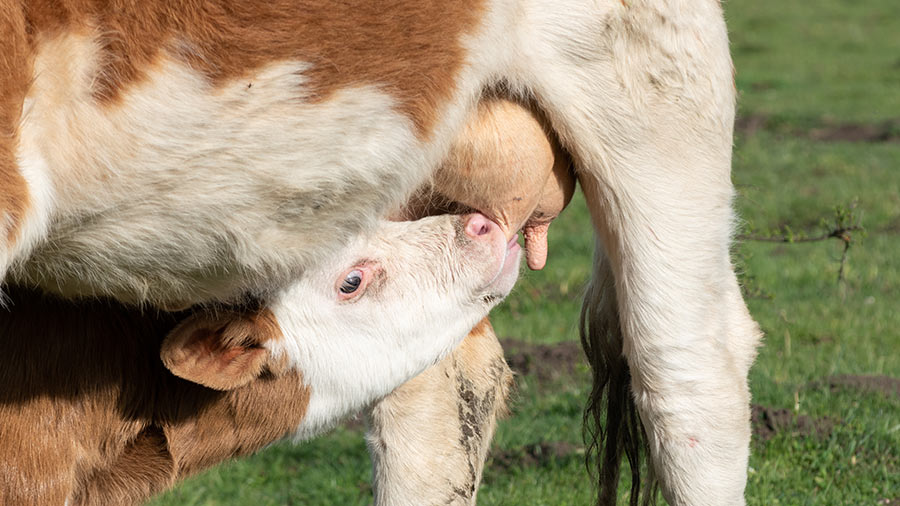Why assisted beef calvings carry a heavy cost
 © slobodan/Adobe Stock
© slobodan/Adobe Stock Attitudes to calving ease vary widely among suckler beef producers.
While some clients expect to calve one-third to half of their heifers, and consider this acceptable, others are disappointed if they have to assist more than one or two a year.
For a farm vet, a successful calving can be a very gratifying callout. It combines just enough mental and physical exertion, and you end up with a happy farmer, who often gives you a cup of tea and a welcome pat on the back.
But not all calvings go like this. Clearly, in the moment, we have to intervene in the interest of cow and calf welfare, but increasingly I drive away from these “successful” calvings with unease.
See also: 5 ways to reduce assisted calvings for improved fertility
Assuming we can reduce calving difficulty, why should we?
It is because assisted calvings come with a wide range of costs affecting profitability, animal welfare and farmer wellbeing.
About the author

Kaz Strycharczyk MA VetMB MRCVS is a vet at Black Sheep Farm Health, he has a specialist interest in cattle veterinary medicine.
Direct costs
- Calf deaths: These commonly occur during birth, but also in the high-risk period following it. Assisted calves are less vigorous, making them about twice as likely to not receive enough colostrum. Because of this, they are far more likely to suffer with joint ill, navel ill and scours, and are about five times more likely to die in early life.
- Dead cows: Less common than calf mortality, but a real risk nonetheless – either on the day the calf is born or following a complication such as uterine prolapse or metritis.
- Veterinary and medicine costs: Even if you calve her yourself, the chances are you will sensibly use some antibiotics and/or anti-inflammatory drugs.
- Animal welfare: Calving jacks routinely place more than 150kg of force on both legs during mechanical assistance. One study reported 40% of calves requiring veterinary assistance had rib fractures. Even a well-managed caesarean section is a painful procedure; a 2006 study found that vets ranked it nine on a 10-point scale for pain. It is difficult to see how more-than-occasional calving assistance can be compatible with a high-welfare system.
- Human safety: Most seasons, at least one of our clients will sustain a moderate-to-severe injury during calving. Similarly, it is common for vets to get a kicking, especially when facilities are unsuitable.
Indirect costs
- Productivity: A cow assisted at calving is significantly less likely to breed back, or in good time for the next season. This is because of damage to the reproductive tract, which delays the cow’s ability to return to normal cycles of heat. If the breeding period is excessively long (more than 12 weeks), she may have time to recover and get back in-calf, but her calving date slips, and the subsequent calves are younger and lighter at weaning.
- Opportunity cost: All that time and expense associated with difficult calvings could be invested in other on-farm activities or spent with family, or even getting some sleep.
Improving calving ease
The first step to reduce difficult calvings is to benchmark your herd.
Targets for assistance are often quoted as fewer than 5% of cows and fewer than 15% of heifers. But there is no reason not to aim for, or achieve, close to zero.
British beef herds are relatively small and constrained from scaling up by poor profitability and exorbitant land values.
An understandable response has been to chase output through “quality”, as defined by the Europ grid. However, the genetics used to achieve this are often at odds with calving ease.
An alternative approach to raise output – as kg/ha of beef – would be to make the calf crop numerically bigger, by improving conception and calf survival, and older at sale, by ensuring cows calve down early in a compact block.
Some reasons for calving difficulties are better understood, or easier to manipulate, than others.
To get to the root of the problem, and ensure the next calving is a smooth one, talk to your vet well ahead of time – ideally before the bull goes out.
